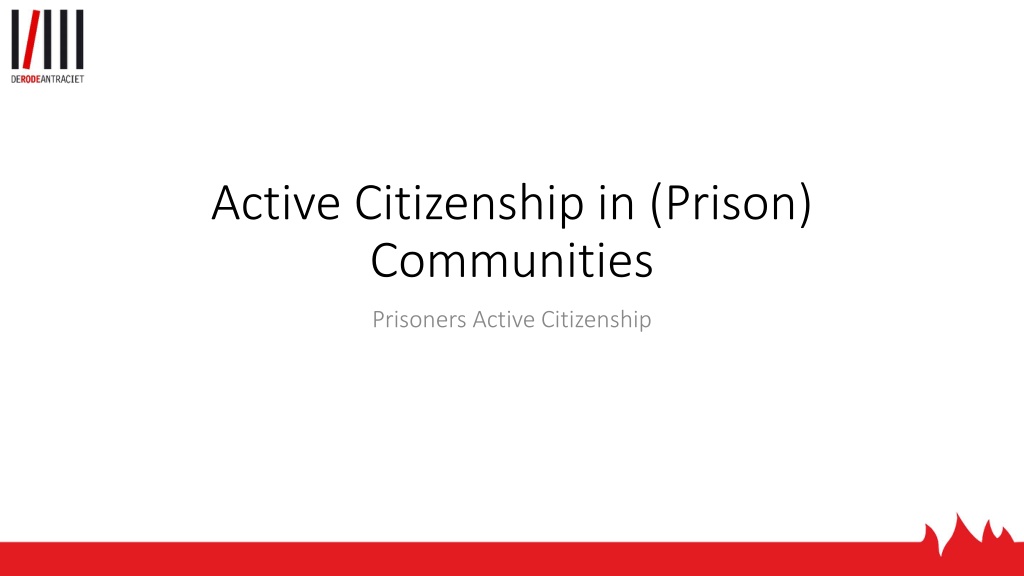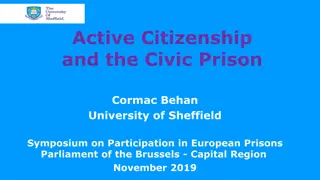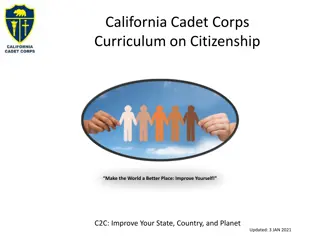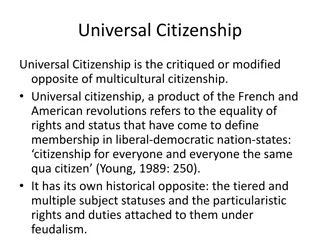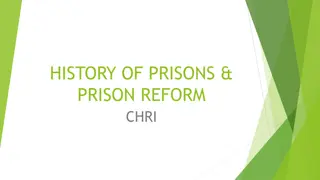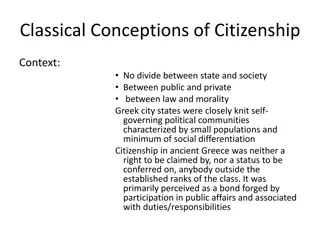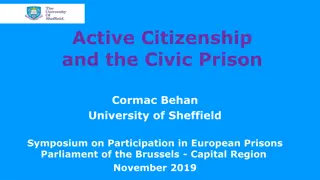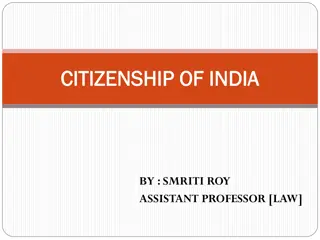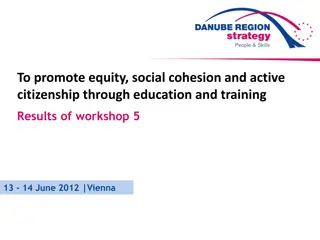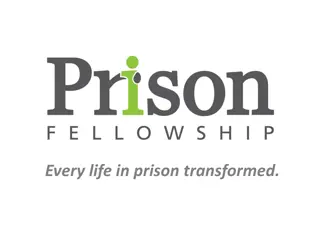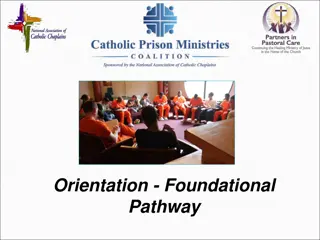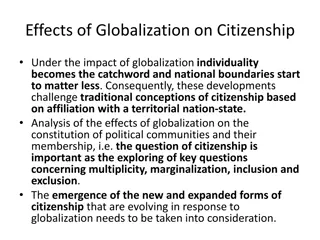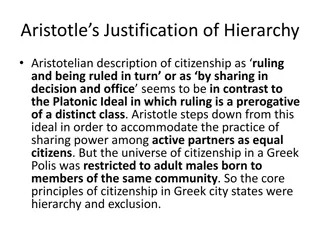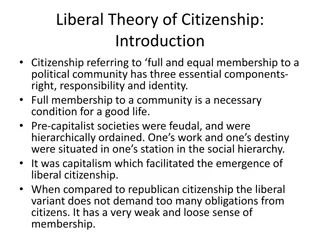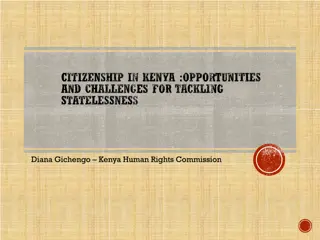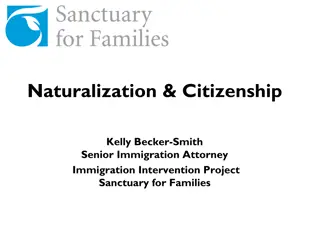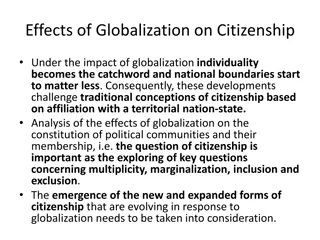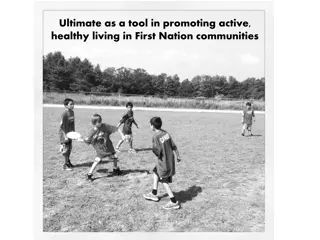Promoting Active Citizenship in Prison Communities
Encouraging active citizenship within prison communities involves engaging prisoners in meaningful activities, fostering skills and empowerment, enhancing morale and relationships, and preparing individuals for reintegration into society. Initiatives such as promoting reading, organizing leisure activities, democratic participation, and involving the community in prison settings all contribute to building a sense of belonging and responsibility among inmates.
Download Presentation

Please find below an Image/Link to download the presentation.
The content on the website is provided AS IS for your information and personal use only. It may not be sold, licensed, or shared on other websites without obtaining consent from the author. Download presentation by click this link. If you encounter any issues during the download, it is possible that the publisher has removed the file from their server.
E N D
Presentation Transcript
Active Citizenship in (Prison) Communities Prisoners Active Citizenship
What is active Citizenship? Active Active: Characterised by action rather than by contemplation or speculation; an active life Citizenship Citizenship: The quality of an individual's response to membership in a community Active citizenship Active citizenship: the action of engaging with issues, ideas, people and communities - whether on a local, regional or national scale
Benefits of AC For participants For participants Building knowledge, skills, empathy and a sense of empowerment For the prison For the prison Better morale and wellbeing among prisoners; better relationships between prisoners and staff For society For society Released prisoners with better skills and qualifications; citizens who are ready to engage with society
From PAC to AC Citizens
An example to translate to the community Aim: The prison wants to engage more prisoners in reading books. Aim: The prison wants to engage more prisoners in reading books. Informing: Informing: Spreading information about books available Consulting: Consulting: Asking what prisoners read, and what they would like to read more of Involving: Involving: Involving prisoners in book selection and discussion groups about certain books Collaborating: Collaborating: Prisoners help drive prison s approach to books on offer; help to run book groups Empowering: Empowering: Prisoners take responsibility for each stage and have control of a budget
Thematic classification in prison environment Organizing and supporting prison/leisure activities. E.g. Organizing a quiz or sport activities for fellow prisoners, taking care of animals Democratic participation = Involving prisoners in decision-making about the prison regime E.g. Prisoner councils, prisoner forums, inmate committees, representative councils, prison forums, student councils Activities that bring members of the community into prison E.g. Prison-university partnerships, singing together in a choir, using gym facilities
Thematic classification in communities Cultural participation from passive Social participation to Community participation Political/ civic participation active
There are two main ways you can introduce active citizenship into a (prison) community Embedding Embedding: changing the degree of participation in existing work Introducing Introducing: starting a new project aimed at increasing citizens active citizenship
Examples of projects Learning Areas Involving prisoners in organising activities Involving prisoners in organising activities Democratic voices Democratic voices Peers together Peers together Outsiders in Outsiders in
From evaluation of the LA to the Toolkit Based on the evaluation and the expertise gained out of the LA we developped a TOOLKIT Citizens inside Builds on the experience of partner projects Draws on literature around prisoner engagement Brings together practical tools to support active citizenship
Main chapters 1. Deciding your aims 2. Outcome planning tool 3. Levels of participation 4. Basic conditions
Deciding your aims Thinking about the end goals of your active citizenship project
Outcomes Identifying your aims, defined for each person and organisation involved in your project, and helping measure the success of your project.
Level of participation What would different levels look like for your project?
What issues might you face? How What issues might you face? How could you overcome them? could you overcome them? Time Location Resources Support of staff Prisoner support Language Security Communication Difference in feelings and approach to prison life topics
How to access resources To download a printable PDF of the Toolkit, please visit: prisonerseducation.org.uk/what-we-do/policy/active-citizenship- in-prisons/ Coming soon to the webpage Coming soon to the webpage Downloadable activity worksheets The PAC project report researching the evidence base for active participation The PAC team's set of policy recommendations for governments across Europe
